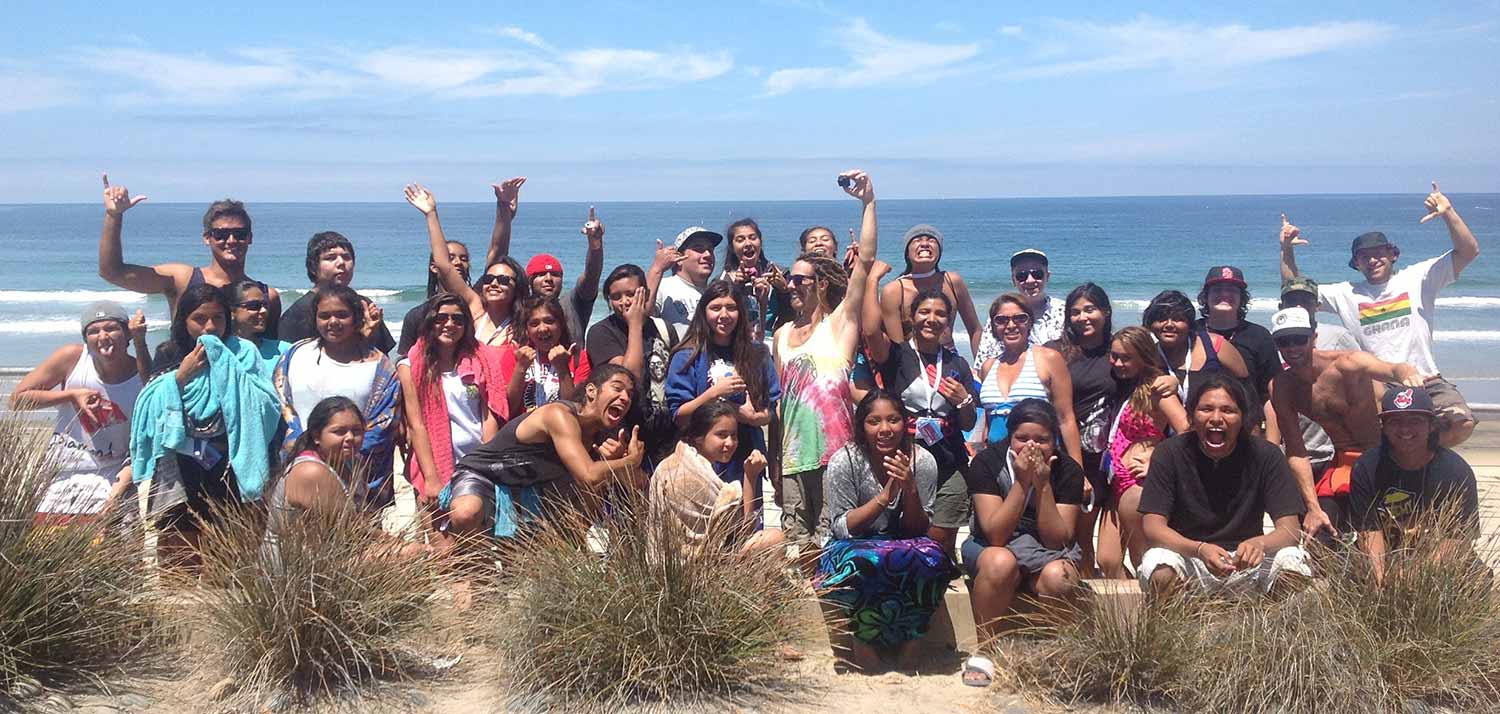UC San Diego Hosts Educational Summer Tours for Young Native American Scholars
The initiative is made possible by the InterTribal Youth program, founded by UC San Diego alumnus
Published Date
By:
- Christine Clark
Share This:
Article Content

This year’s participants of the InterTribal Youth program exploring La Jolla’s beaches.
Middle and high school students of Native American descent are getting a glimpse of college life, as part of program hosted at the University of California, San Diego. Participating youth, who arrived on campus on July 20, are living in the campus’s student housing until August 2 and are taking part in activities centered around leadership, academics, adventure, wellness and culture.
The initiative is made possible by the InterTribal Youth/Young Native Scholars program, which is part of the BRIDGE nonprofit organization. The program was founded by its director, Marc Chavez, an alumnus and former employee of UC San Diego. InterTribal Youth, now in its 14th year, sponsors educational tours of UC San Diego and other regional universities every summer. The program takes a holistic, indigenous approach to education as part of its effort to provide young Native Americans with information, skills and motivation necessary to pursue higher education.
“Our goal is to prepare Native American students for bright futures through hands-on life experiences that are educationally and culturally relevant,” Chavez said.
The indigenous education approach of InterTribal Youth is designed to expose Native Americans to higher education opportunities while celebrating the customs of their culture. This is done by integrating academic events with activities that celebrate personal and environmental wellness––intrinsic traits of Native American heritage. A typical day in the program could involve exploring La Jolla’s oceans by kayaking followed by a writing workshop.
This year, the program received more support from UC San Diego than ever before through grants from the Office of Student Affairs and the Office of Equity, Diversity and Inclusion, which have helped partially fund the program.
“We are very thankful for the support of UC San Diego,” said Chavez, who developed the program while he was on staff with the campus’s Early Academic Outreach Program.
Chavez credits Herb York, founding Chancellor of UC San Diego, for being instrumental in helping with the establishment of InterTribal Youth.
“Chancellor York reached out to me and we discussed the potential of this program and with his support, we were able to get it started,” he said.
The educational tours on the UC San Diego campus are designed to increase the college-going rates of Native Americans as well as encourage them to use the knowledge learned through the program to enhance tribal life and culture at their Indian reservation location. There are 25 students in this year’s class and the vast majority of them are from California.
Chavez said the program’s indigenous approach is critical to its success. “Often, young Native Americans do not feel like they have ownership of this westernized education,” Chavez said. “They don’t identify with it, they do not connect with it, so our whole idea is to create a program which they can enjoy.”
The environmental elements of the UC San Diego campus and surrounding community as well as the historical significance of the region are large components of the program, as La Jolla is home to a Kumeyaay village site.
“The other larger piece is our connection to water and connection to the ocean,” Chavez said. “Water––rivers and oceans––is the most important thing to native people. We have a lot of activities focused on water and water-related issues.”
For InterTribal Youth’s first year, Chavez reached out to tribal communities in the San Diego region and teens from these communities were able to take part in the educational tours the UC San Diego campus.
“That outreach effort was pretty historic,” Chavez said. “It was the first time the campus had made this kind of connection to the tribal communities in our region and our program has continued to grow and gain popularity ever since.”
For more information on the InterTribal Youth/Young Native Scholars program, click here.
Share This:
You May Also Like
Stay in the Know
Keep up with all the latest from UC San Diego. Subscribe to the newsletter today.



